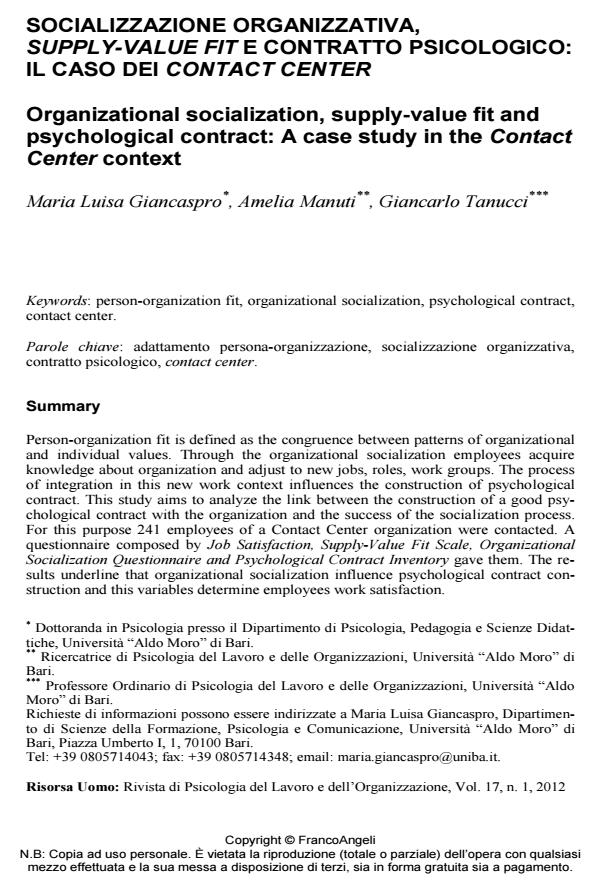Socializzazione organizzativa, supply-value fit e contratto psicologico: il caso dei contact center
Titolo Rivista RISORSA UOMO
Autori/Curatori Maria Luisa Giancaspro, Amelia Manuti, Giancarlo Tanucci
Anno di pubblicazione 2014 Fascicolo 2012/1
Lingua Italiano Numero pagine 17 P. 41-57 Dimensione file 914 KB
DOI 10.3280/RU2012-001006
Il DOI è il codice a barre della proprietà intellettuale: per saperne di più
clicca qui
Qui sotto puoi vedere in anteprima la prima pagina di questo articolo.
Se questo articolo ti interessa, lo puoi acquistare (e scaricare in formato pdf) seguendo le facili indicazioni per acquistare il download credit. Acquista Download Credits per scaricare questo Articolo in formato PDF

FrancoAngeli è membro della Publishers International Linking Association, Inc (PILA)associazione indipendente e non profit per facilitare (attraverso i servizi tecnologici implementati da CrossRef.org) l’accesso degli studiosi ai contenuti digitali nelle pubblicazioni professionali e scientifiche
Person-organization fit is defined as the congruence between patterns of organizational and individual values. Through the organizational socialization employees acquire knowledge about organization and adjust to new jobs, roles, work groups. The process of integration in this new work context influences the construction of psychological contract. This study aims to analyze the link between the construction of a good psychological contract with the organization and the success of the socialization process. For this purpose 241 employees of a Contact Center organization were contacted. A questionnaire composed by Job Satisfaction, Supply-Value Fit Scale, Organizational Socialization Questionnaire and Psychological Contract Inventory gave them. The results underline that organizational socialization influence psychological contract construction and this variables determine employees work satisfaction
Parole chiave:Adattamento persona-organizzazione, socializzazione organizzativa, contratto psicologico, contact center
Maria Luisa Giancaspro, Amelia Manuti, Giancarlo Tanucci, Socializzazione organizzativa, supply-value fit e contratto psicologico: il caso dei contact center in "RISORSA UOMO " 1/2012, pp 41-57, DOI: 10.3280/RU2012-001006